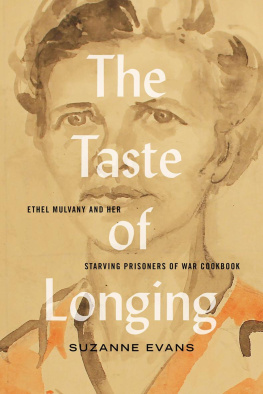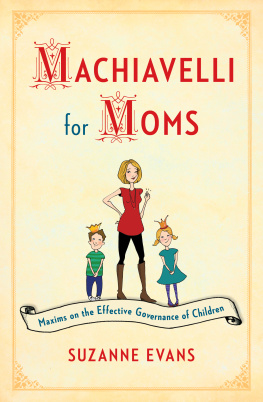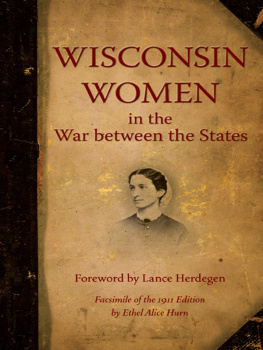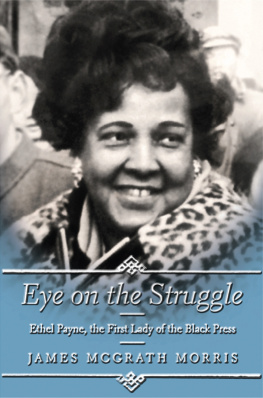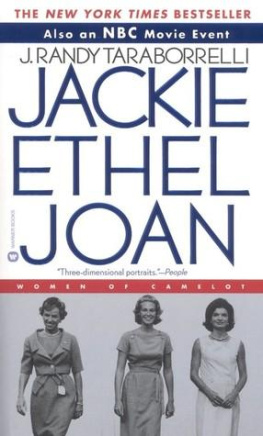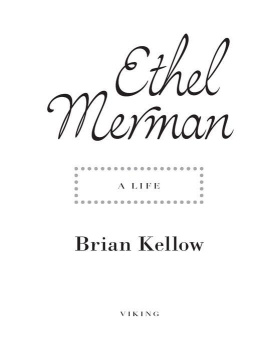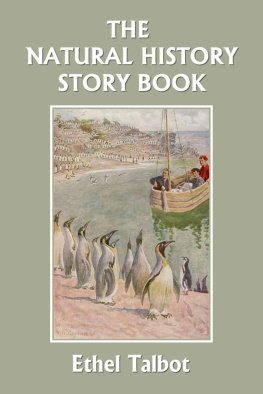Acknowledgements
This project began while I was working on a research fellowship at the Canadian War Museum in Ottawa. I was surrounded by helpful historians, librarians, and staff and was particularly fortunate to have Dr Laura Brandon as my mentor. The fellowship provided me with a fascinating learning opportunity that was further supported by a Canada Council Arts Grant for Creative Non-fiction, an Ontario Arts Council Writers Works in Progress, an Ontario Arts Council Writers Reserve Grant, and a City of Ottawa Arts Grant.
After I discovered the POW cookbook and told my friend Kathy Bergquist about it, she immediately said, Oh, I know Ethels nieces, would you like to meet them? I will be forever grateful for this moment of serendipity and for the help Kathy has given me. She came to know of Ethel while writing a biography of Keith Greenaway, Ethels cherished cousin. Between Keiths daughter, Brenda Greenaway-Serne, and Ethels niece on the Cannard side, Marion King, I have had access to poignant ephemera, fascinating photos, and marvellous stories. Thanks to Bettymay Smith and April DeJong even more family tales and photos came my way. On the Mulvany side, Sally Praulitis, Denis Mulvanys daughter from his second marriage, generously shared photos and family papers.
I am so grateful to Shigeko and Isami Endo of Osaka, Japan, for contributing all their memories of Ethel which they still hold dear. Singer and songwriter Cathy Miller and author Dorothy Nixon both graciously shared their research materials on Ethel and Changi Jail. There are those up on the Manitoulin without whom this project would not have progressed. I am indebted to Patricia Costigan, Norma Hughson, Marilyn Irish, and the late Marion Seabrook. I also thank Manitoulin historian Shelley Pearen for her help.
With this project I felt the delightful pull of the past while delving into the resources of the National Library and Archives, Ottawa; the Pioneer Museum, Mindemoya, Manitoulin; the Imperial War Museum, London; the Red Cross Archives, London; the Changi Museum, Singapore; and the National Museum of Singapore Resource Centre; and, of course, at the Canadian War Museum. I appreciate all the help I received while working in these museums. I also received help at a distance from Jonathan Cooper, Singapore war historian; Jane Peek at the Australian War Memorial; Colin Gale at the Royal Bethlem Hospital Archives, UK; and from Far Eastern Prisoner of War researcher Ronald Bridge. I was touched by the assistance I received from Joyce Cummings and Vic Cole of the Cheltenham Local History Society.
I truly appreciate the work of Gwen Cumyn, Anna Cumyn, Karin Murray-Bergquist, and Lina El Samrout who painstakingly transcribed many of the 1961 taped conversations between Ethel and Sidney Katz. I am grateful to those who read and commented on the manuscript: Tom Shillington, Michael Dawson, Laura Brandon, Julie Paschkis, Wendy Evans, Carol Hunter, Ivy Lerner-Frank, Liz Hay, Marie Adams, and in particular Heather Eaton, who relentlessly pushed me in the right direction.
The recipe testers were a generous group who fed me in many ways. Thank you Dorothy Nixon, Laura Walters Baskett, Alan Cumyn, Julie Paschkis, Jacqueline Dawson, Mary Moncrieff, Kathryn Lyons, Gates Cooney, Jane Allen, Lousia Murray-Bergquist, Kathleen Johnson, Mark Fried, Bernadette Bailey, Annie Jackson, Brenda Greenaway-Serne, Kate Preston, Gwen Cumyn, Molly Steers, Margos Zakarian, Marina Doran, Lesley LeMarquand, Amanda Lewis, Holly Lillico, Chris Elson, and Ashleigh Elson.
I must also mention the women of the Alchemy Arts Residency Program at Artscape on Toronto Island and at Hillier, Prince Edward County, Ontario. With directors Claire Tallarico and Tonia Di Risio we created our own imaginary feasts, shedding new light on Ethels work. And thanks to producer Alisa Siegel for her fine work on the CBC radio documentary on Ethel that grew out of those feasts.
I thank Between the Lines and especially Amanda Crocker for taking on this project with such enthusiasm, and I am grateful to Mary Newberry for her keen editorial eye.
I save my greatest thanks for my husband, Alan Cumyn. Not only has he travelled the world with me on this project, he has ever so patiently shared his skills as a writer and editor each step of the way.
Prologue
Setting the Table
Ethel pulled on the lumpy blue coat shed been given by the Red Cross and glanced in the mirror before heading out to the printers. There was nothing she could do about the coats ugliness, but the garment was hers and not much else in the world was. Just over a year before, on an unforgettable September day in 1945 at the end of the war, she had been carried out of a Singapore prison camp on a stretcher. This five-foot-seven-inch woman had been unable to tip the scales past eighty-five pounds then, but now she was on her way back to her old size, if not her old self. When she arrived at the shop on Torontos Danforth Avenue, she walked in with as much business in her manner as she could muster, put the two ledger books on the counter, and got on with her mission.
The newspapers came around, several of them, she explained with some pride. They all want my story. What she didnt say was that she hadnt been able to tell it. Her story had come out in a jumble glued together with so much venom directed at the Japanese that it had sickened even her. So she was here to try a different tack.
You see these recipesshe pointed out the ones with the check marks beside themI want you to print them up in a book. Fit as many on a page as you can. The printer started flipping through the log books while she kept on talking. Ive picked the best ones, but really theyre all wonderful. Oh, how they made our mouths water when we discussed them. You see I was living in a prison camp in Singapore with a lot of other women when we wrote these and we were all starving.
He looked up in astonishment. Really?
Yes. We ate bayam soup every day for three and a half years. Not much more than cooked-up buffalo grass. How would you like that?
Not much. He shook his head. So all these women named in here, did they live in the camp?
They did and some of them died there too. She leaned in closer. They died in the camp hospital from every disease known to man. We left many of our friends in the ground in Malaya. The soldiers, they died in battle, on firing lines, and on the work gangs of the Siam Railway. She straightened up and pounded her finger on the open books. This is to remember the ones who died and to help those who just made it through.
The shop owner, wide-eyed, took refuge in the mundanity of his trade. Do you want to include the womens names beside the recipes? Ethel turned the books around and had another look. No. Theres too many of them gone already. Itd be like calling back the dead.

